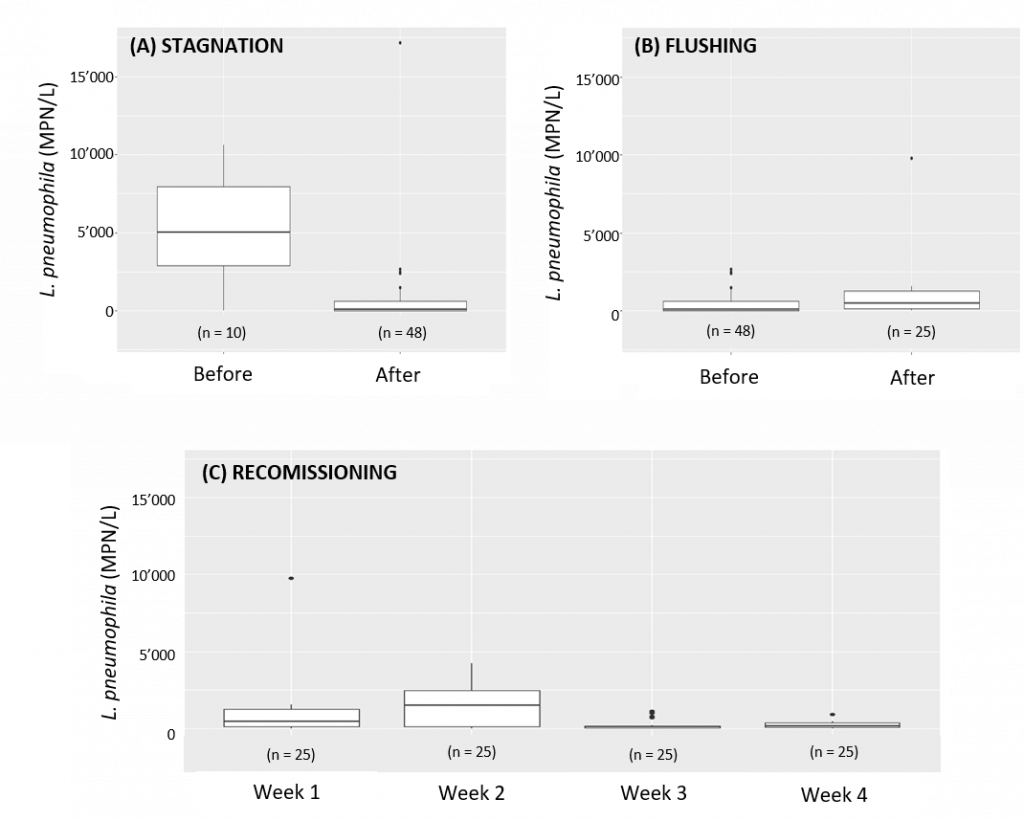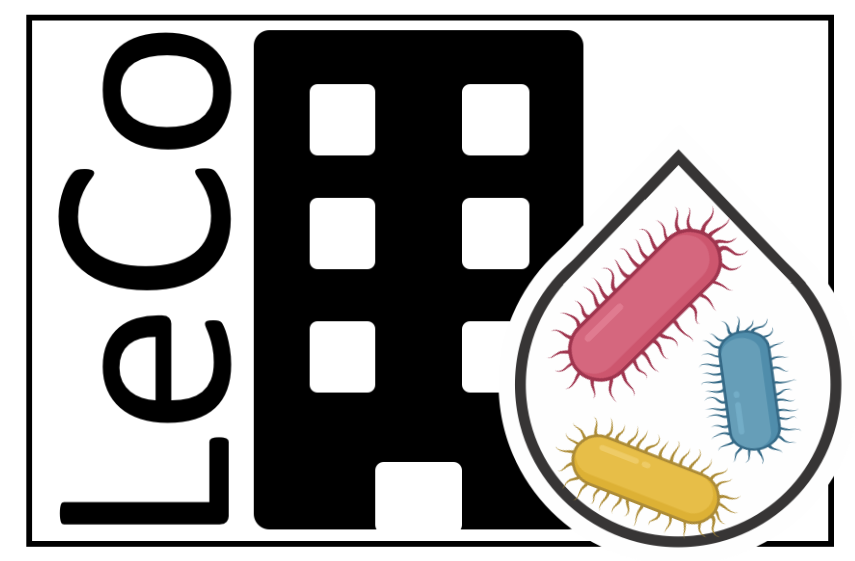First data from an ongoing case study of Legionella pneumophila behaviour in a building plumbing system during and after the COVID-19 lockdown period in Switzerland
Background
Growth of Legionella bacteria (the causative agents of Legionnaire’s disease) is linked amongst other things to stagnant water in building plumbing systems (Ciesielski et al., 1984). The so-called “work-from-home” guidelines and forced business closures during the COVID-19 lockdown period resulted in many buildings being unoccupied for multiple weeks and therefore changed water use patterns and extended stagnation periods. As a consequence, both scientists and news media have warned of potential health risks associated with recommissioning of such buildings (see links below). A comprehensive review specifically focusing on this aspect is available as preprint, written by international researchers, including LeCo project external experts Prof. Michelle Prevost and Prof. Kerry Hamilton. The topic has also been covered extensively in both national and international press releases (links below). As mitigation strategy, recommendations were provided to building owners, facility managers and operators, including doing a systematic flushing of their building plumbing systems before recommissioning. In Switzerland, for example, the Swiss Gas and Water Association (SVGW) has published a factsheet on the 23rd of April that was further emphasized by a press release from the Federal Food Safety and Veterinary Office (FSVO). On international level, similar specifications and recommendations have been provided, e.g. by ESGLI, DVGW and CDC, albeit differing in both content and details.
LeCo research on this topic
To address this issue, a case study was initiated within the LeCo project with the aim of investigating longer periods of stagnation and extensive flushing on the concentrations of Legionella in drinking water installations. For this, researchers from Eawag, HSLU and KLZH are currently sampling and testing water from a multi-story building that was essentially unoccupied for at least 8 weeks and had historical Legionella contamination issues.
As part of the work, the building was flushed according to the SVGW guidelines before recommissioning, and is currently being sampled during step-wise return-to-workplace recommissioning. The preliminary data from this case study was somewhat surprising:
Figure 1A shows that after eight weeks of stagnation there was no significant increase in concentrations of culturable Legionella pneumophila; in fact, concentrations decreased compared to the last measurements prior to lockdown. This suggests that in some buildings, extended stagnation does not necessarily translate into increased Legionella concentrations. Moreover, Figure 1B shows that flushing did not significantly lower the L. pneumophila concentrations in this particular building. Finally, Figure 1C shows L. pneumophila concentrations slightly increasing during the first weeks of recommissioning.

It is important to note that the data come from a single case study. In addition, it has been observed in the past in the same building that legionella concentrations can also increase during shorter periods of stagnation. This data raises multiple questions and further LeCo research will therefore focus on Legionella dynamics during short, medium and long term stagnation. Moreover, we propose that for some buildings, low occupancy recommissioning may potentially pose higher risks than the extended stagnation periods. This latter point may be crucial for considering operation and flushing plans during step-wise recommissioning. Final data and conclusions from this study will be published upon completion of the work.
Disclaimer
As stated above, the data discussed here are from a single building and deals only with Legionella pneumophila. As such, this does not challenge current guidelines regarding the need for regular/proper flushing of stagnated buildings. However, it highlights the need for further research to properly understand the microbial processes during stagnation.
References
Ciesielski, C A, M J Blaser, and W L Wang. “Role of Stagnation and Obstruction of Water Flow in Isolation of Legionella Pneumophila from Hospital Plumbing.” Applied and Environmental Microbiology 48, no. 5 (1984): 984-87.
Links
Examples of various press releases in this context:
- https://www.admin.ch/gov/de/start/dokumentation/medienmitteilungen.msg-id-78885.html
- https://www.luzernerzeitung.ch/zentralschweiz/uri/corona-stillstand-begunstigt-bakterien-in-leitungen-ld.1212651
- https://www.haustec.de/sanitaer/trinkwasser/corona-fachgerechte-ausserbetriebnahme-von-trinkwasser-installationen
- https://www.nytimes.com/2020/05/20/health/coronavirus-legionnaires-offices.html
General information on the legionella topic can be found here.



